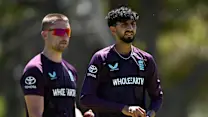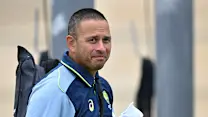News
Teams

ICC World Test Championship, 2025/27
Injury blow for Australia as batter out of Brisbane Test

ICC World Test Championship, 2025/27
Spinner replaces injured speedster in England’s Gabba XI

ICC World Test Championship
England great urges former team to make bold selection call

ICC World Test Championship
Khawaja backed as mystery surrounds Australia XI for Gabba

ICC Under-19 Cricket World Cup, 2026
Ireland name squad for ICC Men's Under-19 World Cup
Editor's Picks
ICC World Test Championship
Anderson weighs in on England's tactics at the AshesICC Women's Emerging Nations Trophy, 2025
ICC Women’s Emerging Nations Trophy Day 5 wrapICC World Test Championship
Bavuma in awe of South Africa's 'massive' feat in IndiaICC World Test Championship
ICC World Test Championship 2025-27: State of Play
